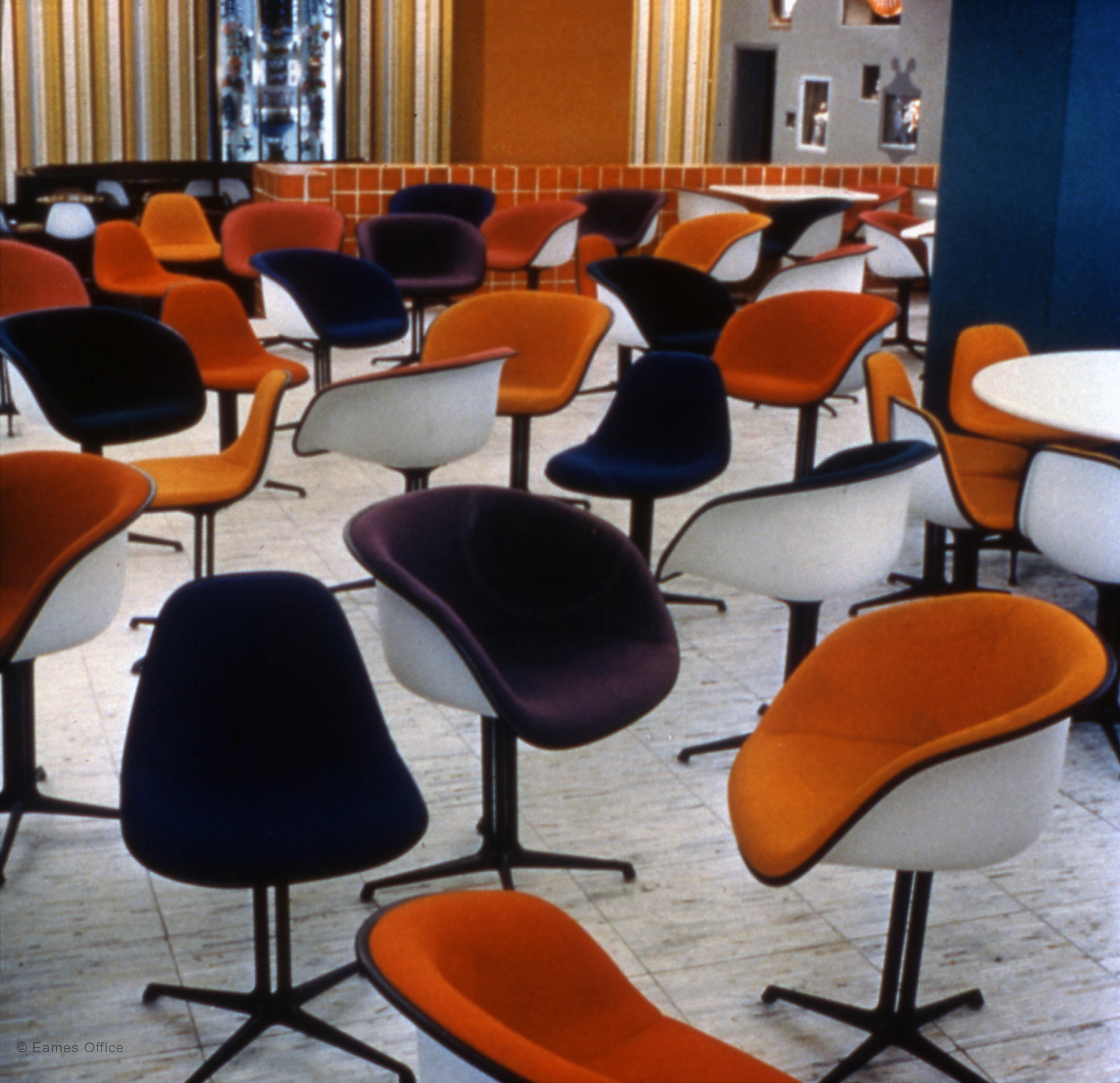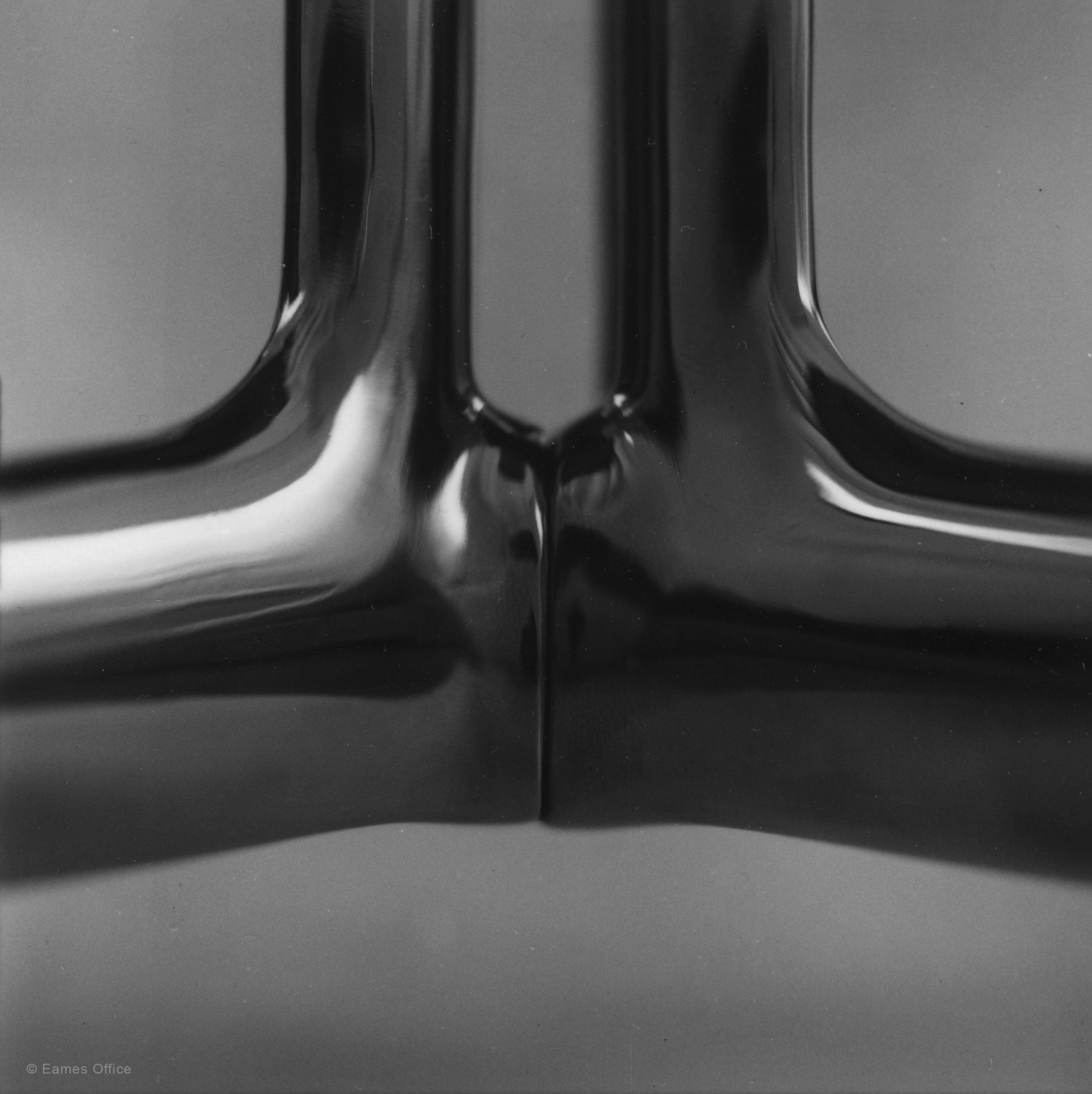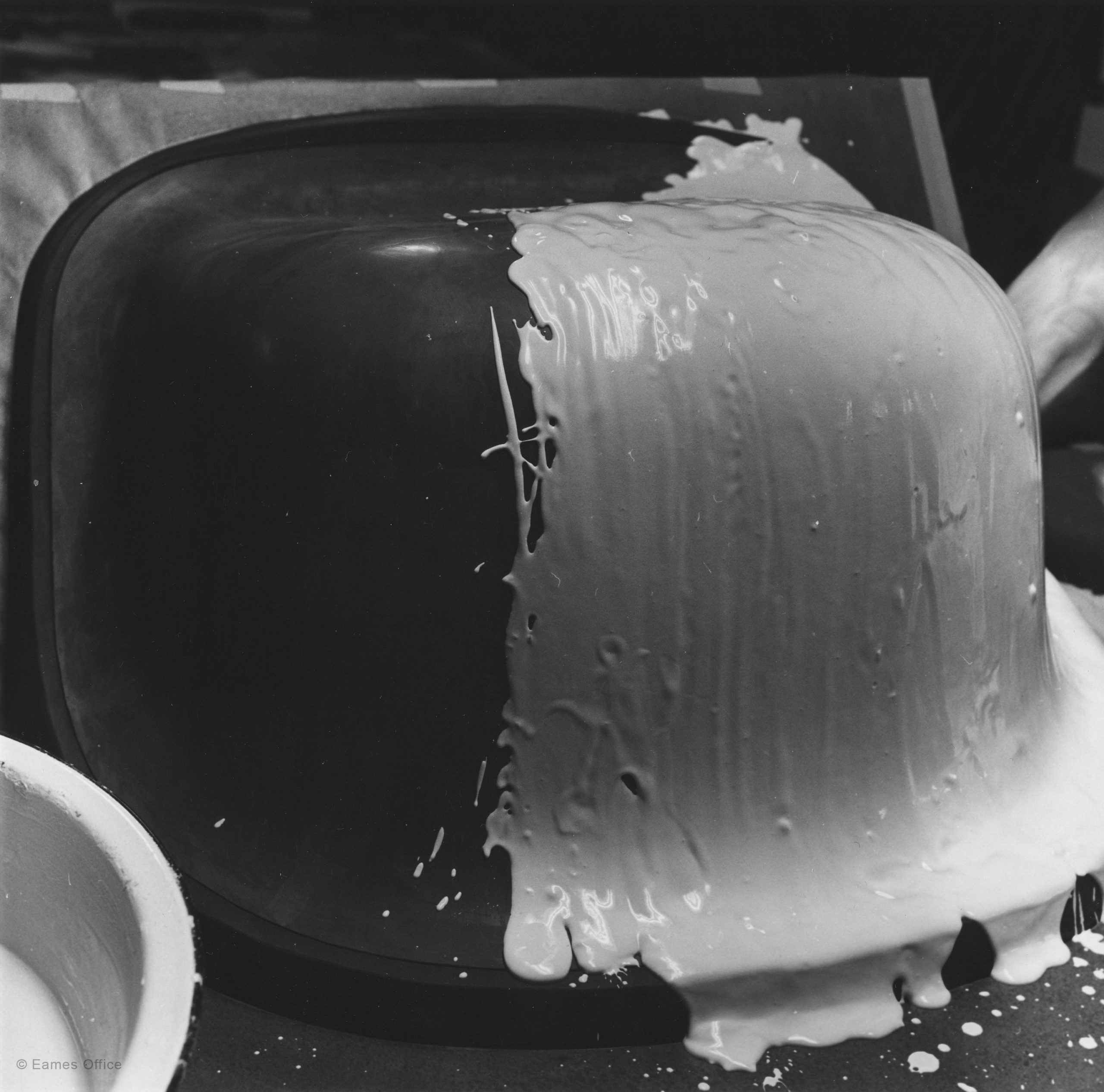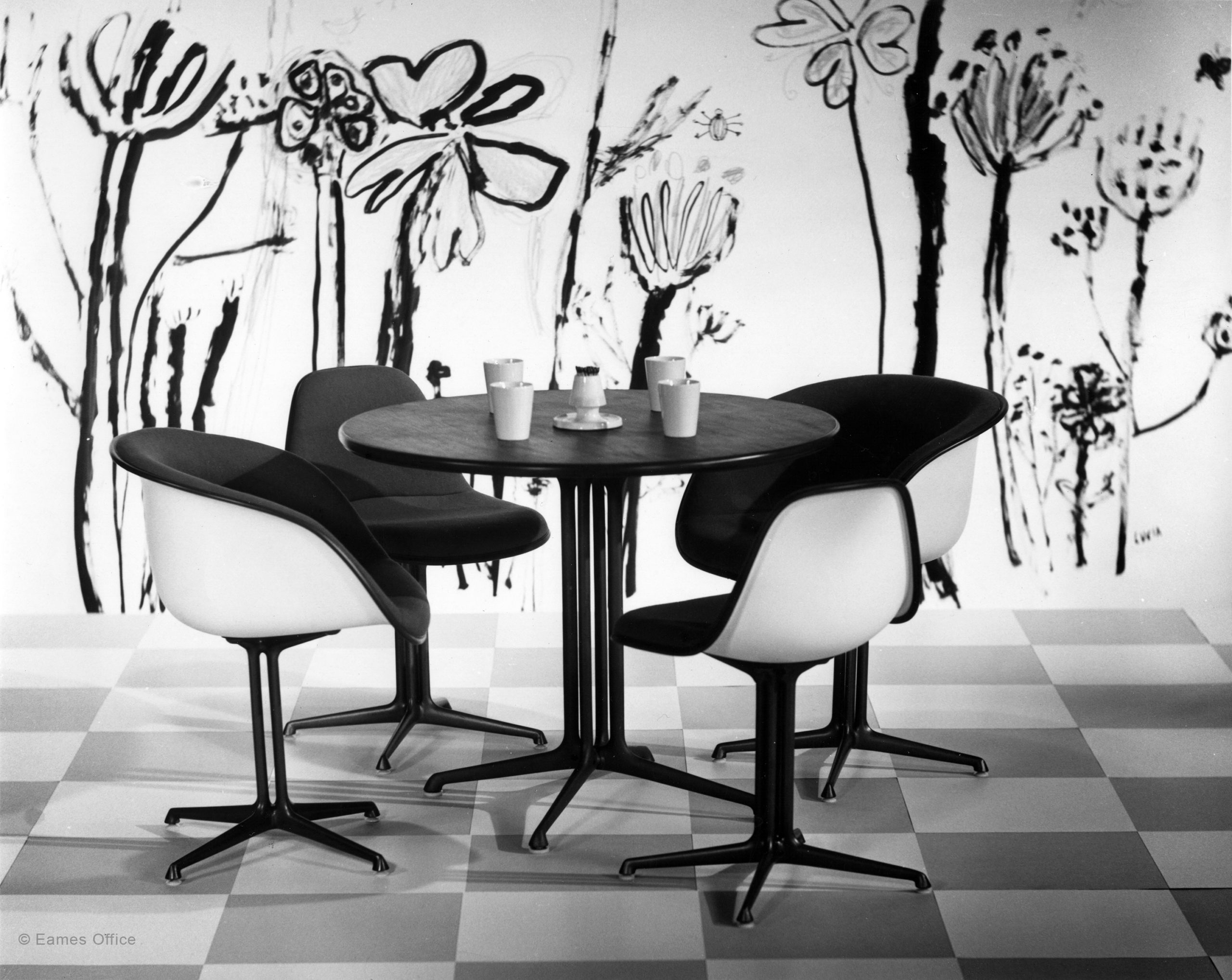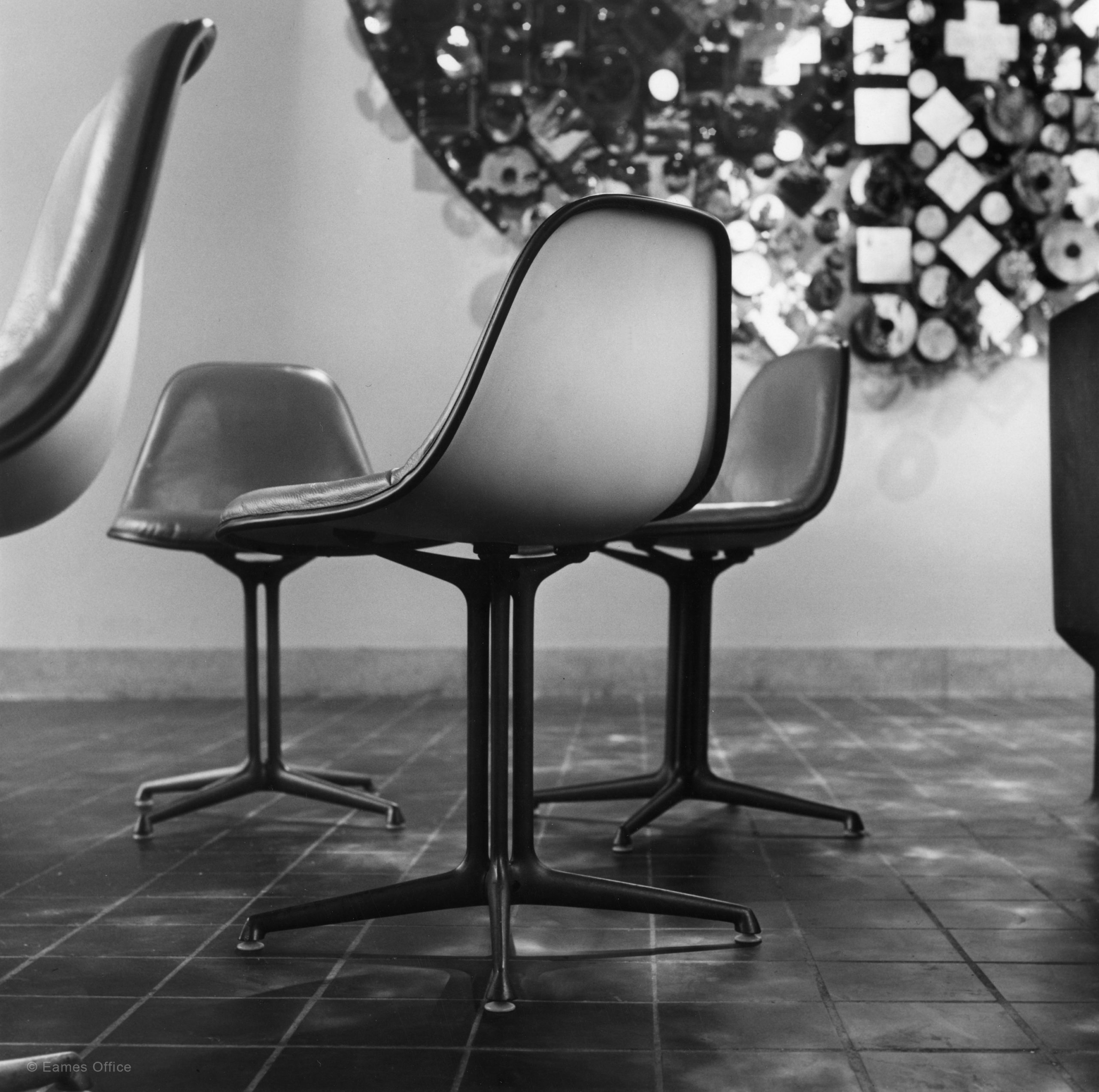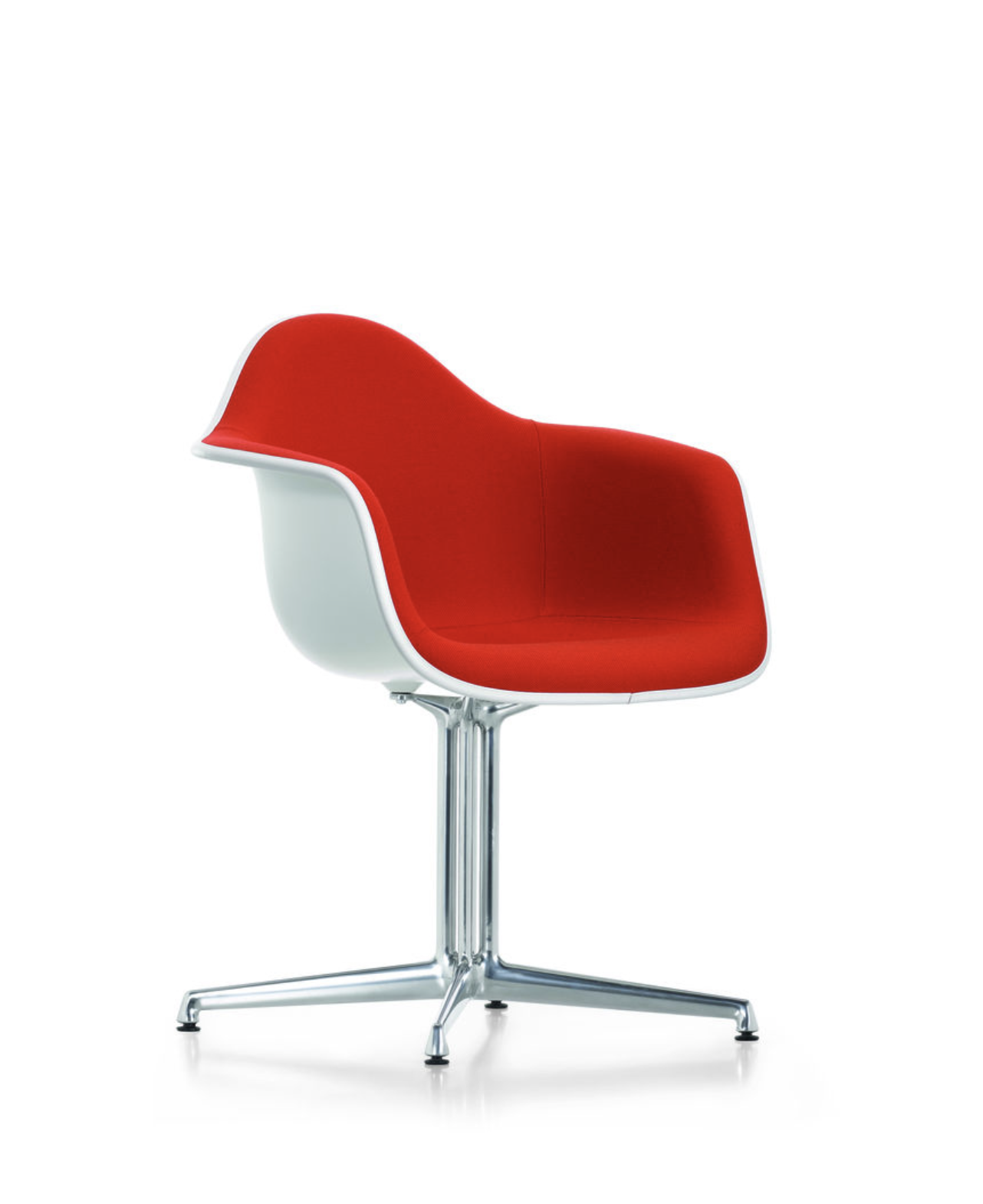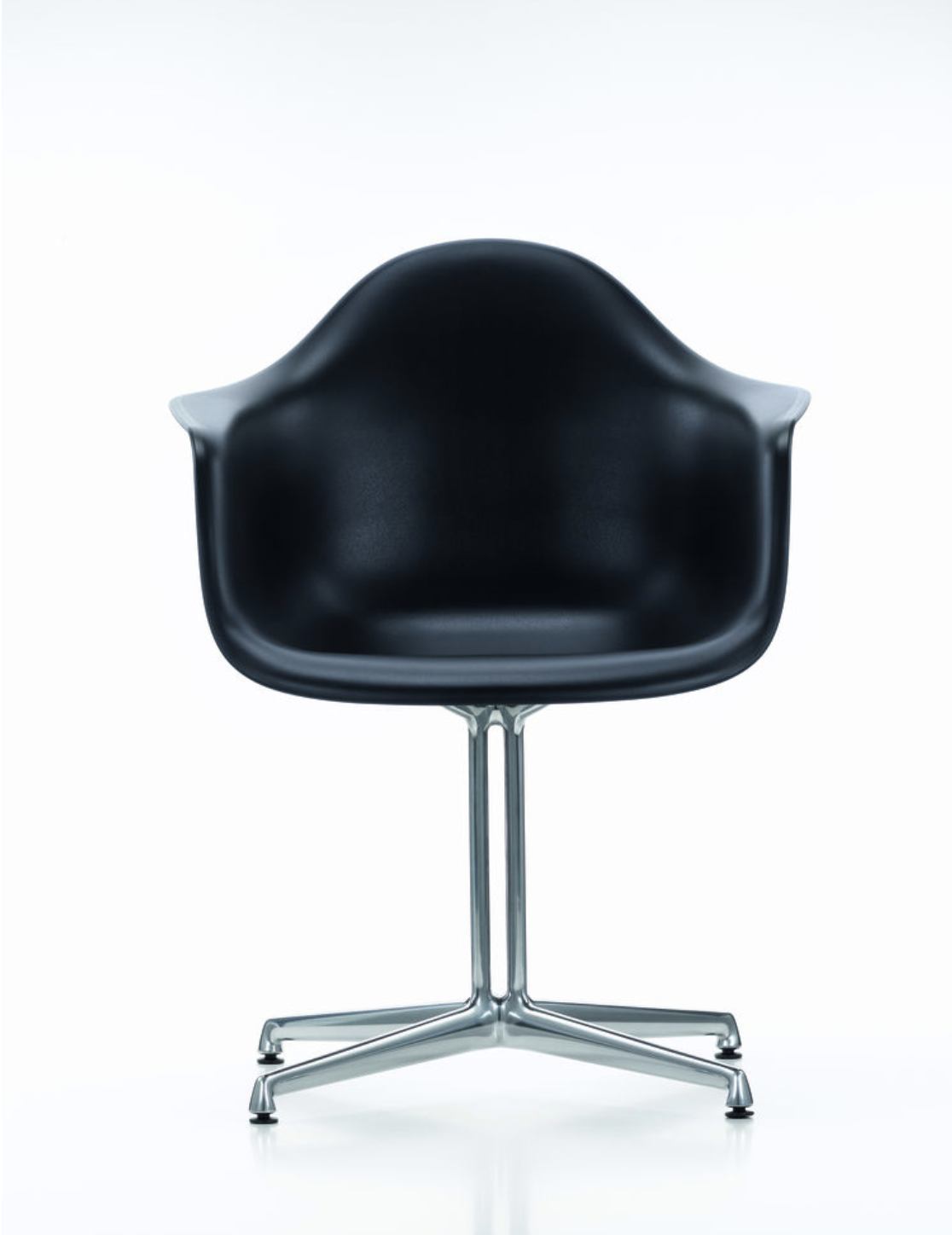Additional Information
Girard explained to Charles and Ray Eames that the height of the backrests on conventional chairs was too high for his vision for this restaurant. By protruding above the level of the table, they detracted from the overall sightlines. Charles and Ray went to work on revised versions of their molded plastic arm and side shells and devised new versions of both. Unlike their molded plastic arm and side shells, the new shells were only ever offered in upholstered versions. The side shell chair was the 1700-1 and the arm shell chair was the 1730-1.
It had been more than a decade since they developed the Eames molded plastic arm and side chairs, and as was always the case, Charles and Ray were more than willing to revisit a design to see if it could be improved upon or evolved to suit a different purpose. This is another guidepost for them to work on things that interested them personally. The La Fonda group is an example of the Eameses “keeping it fresh.” With an ever-present commitment to making complete designs, the Eameses also used this opportunity to reconsider the bases for the chair.
In a restaurant, a heavy-duty contract base was needed. The most advanced contract base was the Eames Contract Base, first introduced with the Eames aluminum group. That was a good base, but it took three different manufacturing steps to produce. Whereas the earlier contract bases were made of two materials: steel and cast aluminum and made in three different steps, these bases were simpler but of equal strength and durability. In addition, each base is made of only two parts of a single material, cast aluminum, each a mirror image of the other. This reductive approach meant these new bases could be made less expensively. The two parts were joined on early examples by Heli arc welding, but later models were made with mechanical join in the form of a hex nut.
Consistent with the Eames molded plastic chairs and the Eames upholstered wire chairs, the two La Fonda shells could be combined on any of the available bases. Thus, for example, one could get either La Fonda shells on the drafting height bases, which were first developed for the molded plastic shells.
Unique to Vitra, the molded plastic arm shell can also be combined with the La Fonda base for a design known as the DAL.
The original La Fonda chairs, with their bases coated in dark grey epoxy (again in response to Girard’s requirements), first appeared in La Fonda Del Sol Restaurant. The Eameses and their partners at Herman Miller agreed that the design would appeal to their larger clientele, and starting in 1961 made these designs available to the public. After that, they were in continuous production for almost 30 years.
Contract bases similar to these chair bases were designed for coffee tables, equipped with onyx, marble, and solid slate tops.
